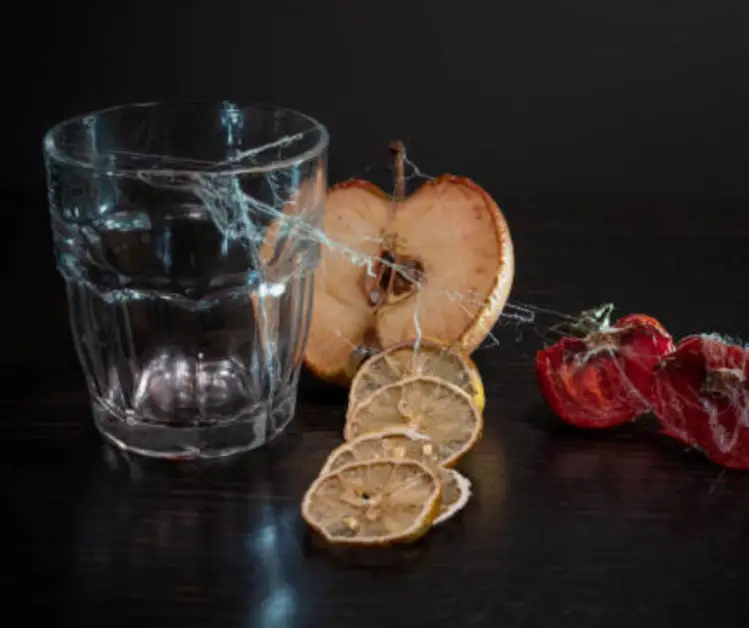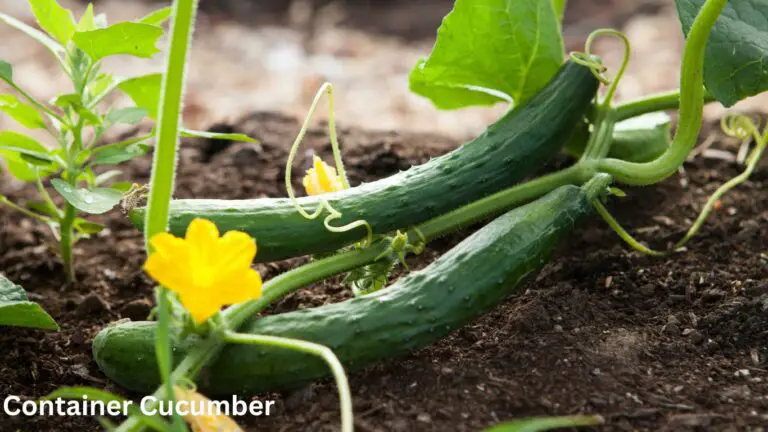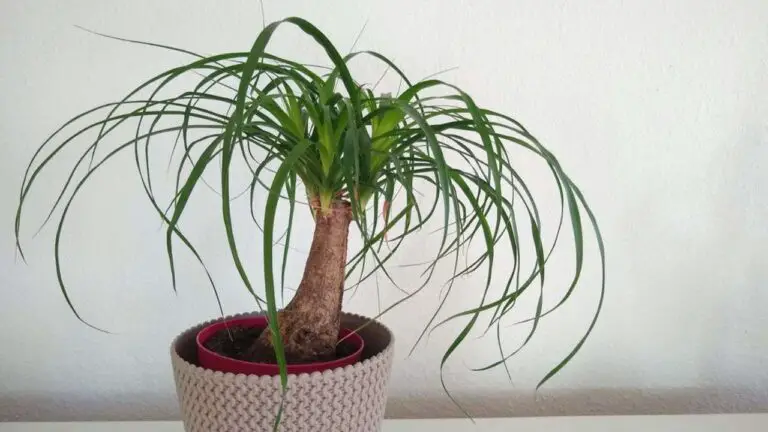Managing Botrytis Cinerea: Prevention and Control Strategies
Table of Contents
Factors Contributing to Botrytis Cinerea Outbreaks
Botrytis cinerea, commonly known as gray mold, is a devastating fungal disease that affects a wide range of plants, from flowers and vegetables to fruits and ornamental crops. Understanding the factors that contribute to Botrytis cinerea outbreaks is crucial for effective management and control. One of the primary drivers of Botrytis cinerea outbreaks is high humidity. This fungal pathogen thrives in moist conditions, making it particularly problematic in regions with humid climates or during periods of excessive rain. High humidity provides the ideal environment for Botrytis cinerea spores to germinate and infect susceptible plants. Additionally, poor air circulation and inadequate ventilation can further exacerbate the problem by creating stagnant conditions that promote disease development. It is essential to monitor and control humidity levels in greenhouses and indoor growing environments to minimize the risk of Botrytis cinerea outbreaks.
Another significant factor contributing to Botrytis cinerea outbreaks is plant overcrowding. When plants are densely packed, it restricts air circulation and creates microclimates that favor fungal growth. Overcrowding also leads to increased humidity levels as the plants’ foliage traps moisture, providing an ideal breeding ground for Botrytis cinerea spores. Proper plant spacing and regular pruning to increase air movement can help reduce the risk of disease incidence. Additionally, proper sanitation practices play a crucial role in preventing Botrytis cinerea outbreaks. The fungal pathogen can survive on infected plant debris, such as dead leaves or decaying flowers, making it essential to remove and dispose of any plant material that may serve as a source of infection. By maintaining clean growing areas and eliminating potential sources of Botrytis cinerea, gardeners can significantly reduce the risk of outbreaks and subsequent crop losses.
A table is given below
| Factor | Description |
|---|---|
| Virulence Factors | Botrytis cinerea is responsible for gray mold disease in over 200 host plant species. The infection is mediated by numerous extracellular enzymes, proteins, and metabolites. These compounds play various roles in different stages of the infection process. For instance, cell wall-degrading enzymes facilitate penetration into the host surface, while toxins, oxalic acid, and reactive oxygen species contribute to killing host cells. Additionally, cell wall-degrading enzymes convert host tissue into fungal biomass. On the other hand, B. cinerea infection induces biosynthesis of phytoalexins, allowing the fungus to overcome a wide spectrum of phytoalexins and exhibit pathogenicity across a broad host range. |
| Phytotoxic Metabolites and Organic Acids | B. cinerea releases phytotoxic metabolites and organic acids, promoting necrotrophic infection. These compounds contribute to host tissue acidification and cell death. |
| Secretion of Plant Cell Death Inducing Proteins (CDIPs) | CDIPs play a role in promoting necrotrophic infection by inducing plant cell death. |
| Weather Conditions | Botrytis blight outbreaks are favored by cloudy, rainy weather. |
Recognizing the Symptoms of Botrytis Cinerea
Botrytis cinerea, commonly known as grey mold, is a fungal disease that affects a wide range of plants, including fruits, vegetables, flowers, and ornamentals. Recognizing the symptoms of Botrytis cinerea is crucial for early detection and effective management of this devastating pathogen.
One of the most evident signs of Botrytis cinerea infection is the presence of fuzzy grey or brownish mold on the affected plant parts. This mold often appears on flower petals, fruit surfaces, or leaves, giving them a decayed and withered appearance. Additionally, affected tissues may become water-soaked and eventually turn necrotic. As the disease progresses, the mold can spread rapidly, leading to a noticeable wilting and collapse of the plant. Therefore, it is essential to regularly inspect plants for any signs of mold growth, especially during periods of high humidity or moist conditions.
Furthermore, Botrytis cinerea infection can manifest differently depending on the plant species it affects. For example, on grapes, it commonly causes bunch rot, which leads to shriveled and discolored berries. In roses, it may cause blossom blights and a characteristic “bunchy” look in the clusters. Therefore, it is important to be familiar with the specific symptoms exhibited by the targeted plant species to detect and manage Botrytis cinerea effectively.
By being vigilant and observant of these symptoms, gardeners can take prompt action to control the spread of Botrytis cinerea and minimize its impact on plant health. Early detection not only allows for timely intervention but also helps prevent the disease from spreading to other plants in the garden or greenhouse. Stay tuned for our upcoming sections on the importance of early detection and implementing proper sanitation practices to effectively manage Botrytis cinerea outbreaks.
The Importance of Early Detection
Early detection is crucial in managing and preventing outbreaks of Botrytis cinerea, a fungal pathogen that affects a wide range of plants. By recognizing the symptoms of Botrytis cinerea at an early stage, gardeners and growers can take immediate action to control the spread of the disease and minimize its impact on crop yields.
One of the key benefits of early detection is the ability to implement timely and targeted treatment strategies. By identifying the presence of Botrytis cinerea at the earliest signs, gardeners can apply appropriate fungicides or initiate biological control methods to effectively combat the pathogen. This not only reduces the risk of further infection but also ensures that plants remain in optimal health, allowing them to continue their growth and development without the hindrance of disease. Furthermore, early detection enables gardeners to assess the severity of the outbreak accurately, providing valuable insights into the effectiveness of their chosen management strategies and the need for further intervention.

Implementing Proper Sanitation Practices
Proper sanitation practices play a crucial role in preventing and managing Botrytis cinerea outbreaks in gardens and agricultural settings. This fungal pathogen thrives in moist and decaying plant materials, making cleanliness a key factor in its control. By implementing effective sanitation measures, gardeners can reduce the presence of Botrytis cinerea spores and limit their potential for causing disease.
First and foremost, it is essential to remove and dispose of any infected plant material promptly. This includes dead leaves, flowers, or fruits affected by Botrytis cinerea. By removing these potential sources of infection, you can significantly reduce the inoculum present in your garden. Additionally, regular removal of debris and fallen plant material will prevent the fungus from finding a suitable environment for survival and further spread.
Maintaining clean and well-organized garden beds is another crucial aspect of proper sanitation. Weeds and overgrown vegetation create humid and crowded conditions that favor the development of Botrytis cinerea. By keeping your garden beds tidy and free from excessive plant growth, you can improve air circulation and reduce the risk of disease. Regularly inspecting and pruning your plants will also help eliminate any infected or damaged plant parts, ensuring that Botrytis cinerea does not find a foothold in your garden.
Implementing proper sanitation practices is just the first step in preventing Botrytis cinerea outbreaks. By combining these practices with other management strategies and cultural techniques, gardeners can effectively minimize the impact of this fungal pathogen.
Cultural Practices for Botrytis Cinerea Management
Cultural practices play a crucial role in the management of Botrytis cinerea, commonly known as gray mold. By adopting proper cultural practices, gardeners can effectively control and prevent outbreaks of this devastating fungal disease. One fundamental practice is maintaining good air circulation in the garden or greenhouse. Providing adequate space between plants and ensuring proper ventilation helps reduce humidity levels, which are favorable for the growth and spread of Botrytis cinerea spores.
In addition, proper sanitation practices are paramount in preventing the recurrence and spread of Botrytis cinerea. Removing and disposing of infected plant material, including leaves, flowers, and fruits, is crucial to prevent the disease from spreading to healthy plants. Regularly cleaning and disinfecting tools, containers, and equipment used in the garden can also help in reducing the risk of contamination. By implementing these cultural practices, gardeners can significantly minimize the risk of Botrytis cinerea outbreaks and maintain a healthy garden.

Choosing Resistant Varieties
When it comes to managing the outbreak of Botrytis cinerea, selecting resistant varieties is a crucial aspect of prevention and control. Resistant varieties can greatly reduce the risk of disease development and minimize the need for chemical interventions.
The key to selecting resistant varieties lies in understanding their genetic makeup and their ability to resist infection by Botrytis cinerea. Plant breeders and researchers have made significant advancements in identifying and developing resistant varieties that exhibit natural defense mechanisms against the pathogen. These varieties often possess traits such as thicker cuticles, enhanced cell wall strength, and the production of antimicrobial compounds. By choosing such varieties, gardeners can take a proactive approach in preventing Botrytis cinerea outbreaks, lowering the reliance on chemical controls, and protecting their plants’ health.
In conclusion, the selection of resistant varieties is a strategic and effective method to combat Botrytis cinerea outbreaks. By incorporating resistant varieties into the garden, enthusiasts can minimize the risk of disease development and ensure the long-term health and productivity of their plants. Stay tuned for the next section, where we will explore optimizing environmental conditions to further minimize the impact of this notorious pathogen.
Optimizing Environmental Conditions to Minimize Botrytis Cinerea
Optimizing environmental conditions is crucial for minimizing outbreaks of Botrytis Cinerea, a fungal pathogen that can cause significant damage to plants. By creating an unfavorable environment for its growth and development, gardeners can effectively reduce the incidence and severity of this disease.
One key factor to consider when optimizing environmental conditions is humidity. Botrytis Cinerea thrives in high humidity environments, where moisture lingers on plant surfaces and creates an ideal breeding ground for the fungus. Therefore, it is important to maintain proper air circulation and reduce humidity levels in the growing area. This can be achieved through the use of fans or ventilation systems, as well as by spacing plants adequately to allow air to flow freely between them. Additionally, avoiding overhead watering and instead watering at the base of the plant can help prevent excess moisture on foliage, further minimizing the risk of Botrytis infection.
Another important aspect to consider is temperature. Botrytis Cinerea tends to be more active and aggressive in cooler temperatures, typically between 59°F and 72°F (15°C – 22°C). Therefore, maintaining a slightly higher temperature in the growing area can help inhibit its growth. However, it is crucial to strike a balance, as excessively high temperatures can stress plants and create other favorable conditions for the pathogen. Monitoring and adjusting the temperature accordingly can be crucial in preventing and managing outbreaks of Botrytis Cinerea.
Effective Pruning Techniques
Proper pruning techniques are crucial in managing the spread of Botrytis cinerea in gardens or agricultural settings. Pruning not only helps in maintaining the overall health and structure of the plants but also plays a significant role in reducing the risk of disease outbreaks. It is important to understand the right time and method for pruning to ensure maximum effectiveness.
When it comes to pruning to control Botrytis cinerea, it is recommended to focus on removing dead or dying plant material, as these are often the prime sites for infection. Regularly inspect plants for any signs of wilted or discolored leaves, stems, or flowers, and promptly remove them. Make sure to sanitize your pruning tools before and after each use with a solution of bleach or alcohol to prevent cross-contamination.
In addition to removing infected plant parts, proper pruning techniques can also help improve air circulation within and around the plants. This allows for faster drying of foliage and reduces the humidity that favors the growth of Botrytis cinerea. Prune any dense foliage or branches that restrict air movement, especially in plants with a dense canopy or where plant spacing is limited.
Remember, pruning should be done carefully and selectively. Avoid excessive pruning or creating wounds that can serve as entry points for pathogens. It is always useful to consult with a horticulture expert or refer to specific pruning guidelines for different plant species to ensure optimal results in managing Botrytis cinerea outbreaks.
| Technique | Description |
|---|---|
| Pinching | Pinching involves removing the tips of young shoots or stems. It encourages branching and bushier growth, making plants look neat and compact. This technique is commonly used for annuals and tender perennials. |
| Shearing | Shearing is a method of shaping plants by trimming them uniformly. It’s often used for formal hedges, creating a straight edge and maintaining a neat appearance. |
| Heading | Heading cuts involve removing a portion of a stem or branch, usually just above a bud or lateral shoot. This technique stimulates new growth and helps control the size and shape of the plant. |
| Drop-crotching | Drop-crotching is a technique where you selectively remove entire branches back to a main stem or lateral branch. It’s useful for thinning out crowded areas and improving air circulation within the plant. |
| Thinning | Thinning cuts involve removing entire branches or stems from the interior of the plant. This technique reduces density, opens up the canopy, and allows more light to reach the remaining branches. |
Utilizing Biological Controls
Biological controls offer a sustainable and environmentally-friendly approach to managing Botrytis cinerea outbreaks in gardening and agricultural settings. By utilizing natural enemies and beneficial microorganisms, gardeners can effectively suppress the growth and spread of this fungal pathogen.
One commonly used biological control method is the introduction of predatory insects or mites that feed on Botrytis cinerea or its fruiting bodies. For example, the predator mite Amblyseius californicus has shown promising results in reducing grey mold by preying on the mite colony and limiting its population growth. Additionally, the use of beneficial fungi such as Trichoderma spp. has been proven effective in suppressing Botrytis cinerea by competing for nutrients and space, as well as releasing enzymes that degrade its cell walls.
Integrating biological controls into a comprehensive pest management strategy can provide long-term control of Botrytis cinerea while minimizing the use of synthetic pesticides. These biological control methods not only help to reduce the environmental impact but also promote biodiversity and create a balanced ecosystem in the garden or agricultural setting. Stay tuned for more information on other effective control measures to manage Botrytis cinerea outbreaks and ensure the health and productivity of your plants.
Chemical Control Options for Botrytis Cinerea
Chemical control options for Botrytis Cinerea can be an effective strategy to manage and mitigate the spread of this fungal pathogen. Fungicides are commonly used to target and suppress Botrytis Cinerea infections, providing an additional tool for growers in their management practices. However, it is crucial to carefully select and utilize these chemical options to ensure efficacy while minimizing potential negative impacts on the environment and human health.
One commonly used chemical control option for Botrytis Cinerea is the application of fungicides such as boscalid, fenhexamid, or cyprodinil. These fungicides work by inhibiting the growth and development of the pathogen, reducing its ability to infect and spread within the crop. Incorporating these fungicides into a comprehensive spray schedule, along with other management practices, can help to minimize the occurrence and severity of Botrytis Cinerea outbreaks.
It is important to note, however, that the effectiveness of chemical control options can be influenced by various factors such as the timing of applications, the presence of fungicide resistance, and the specific strains of Botrytis Cinerea present. Therefore, it is essential to closely monitor the efficacy of chemical treatments and adjust management strategies accordingly. Moreover, integrating chemical control options with other management practices, such as cultural practices and biological controls, can enhance the overall effectiveness and sustainability of Botrytis Cinerea management programs.
Integrated Pest Management (IPM) Strategies
Integrated Pest Management (IPM) strategies are essential for effective management and control of Botrytis Cinerea. By implementing a holistic approach that combines cultural, biological, and chemical control methods, gardeners and growers can significantly reduce the impact of this destructive fungal pathogen.
One key aspect of IPM is the use of preventive measures to create an unfavorable environment for Botrytis Cinerea. This includes optimizing cultural practices such as proper sanitation, implementing effective pruning techniques, and selecting resistant varieties. Regular inspection and monitoring of plants for early detection of symptoms is crucial in order to take prompt action and prevent further spread of the disease. In addition, creating favorable environmental conditions for the plants while minimizing humidity levels and providing adequate ventilation can help reduce the risk of Botrytis Cinerea outbreaks.
By integrating biological controls into their pest management strategies, gardeners can enhance the natural defenses of their plants against Botrytis Cinerea. Beneficial organisms such as predatory mites and fungi can be introduced to target and suppress the pathogen’s growth. This approach not only reduces the reliance on chemical treatments but also promotes a more sustainable and environmentally friendly approach to disease management. However, it is important to note that biological controls should be carefully selected and implemented according to appropriate guidelines to ensure their efficacy.
In the next section, we will delve into the chemical control options available for managing Botrytis Cinerea outbreaks. Stay tuned to learn more about the role of fungicides and their proper use within an IPM framework for long-term control of this devastating pathogen.
Preventive Measures for Botrytis Cinerea
Preventive measures are crucial in managing and controlling Botrytis cinerea, a fungal pathogen responsible for widespread plant diseases. By implementing these measures, gardeners can reduce the risk of Botrytis outbreaks and ensure the health and productivity of their plants.
One essential preventive measure is maintaining proper sanitation practices. Regularly cleaning and disinfecting gardening tools, containers, and equipment can significantly minimize the spread of the pathogen. Additionally, removing and promptly disposing of any infected plant debris or fallen leaves can help prevent the build-up of inoculum, reducing the chances of a Botrytis outbreak. By carefully practicing sanitation, gardeners can create an environment that is less favorable for the fungus to thrive and spread.
Another important preventive measure is optimizing environmental conditions. Botrytis cinerea thrives in damp and humid environments, making proper air circulation and moisture control crucial in preventing outbreaks. By providing adequate spacing between plants, ensuring sufficient ventilation, and avoiding over-watering, gardeners can create an unfavorable environment for the pathogen’s growth and development. Additionally, carefully monitoring and managing temperature and humidity levels in greenhouses or indoor gardens can further help prevent Botrytis cinerea outbreaks. Through vigilant environmental control, gardeners can significantly reduce the risk of fungal infections and maintain healthy, disease-free plants.
Developing a Comprehensive Spray Schedule
Developing a comprehensive spray schedule is essential for effectively managing and controlling Botrytis Cinerea outbreaks in agriculture and horticulture. By strategically timing and applying appropriate fungicides, growers can minimize the impact of this devastating fungus on their crops.
The first step in creating a spray schedule is to accurately identify the susceptible stages of plant development to Botrytis Cinerea infection. This includes understanding the plant’s growth cycle, susceptibility to infection, and the environmental conditions that favor disease development. Consult with local agricultural extension services, botanists, or agronomists to gather accurate and up-to-date information specific to your region and crop.
Next, analyze historical data and disease severity observations from previous seasons to identify the critical periods when Botrytis Cinerea outbreaks are most likely to occur. It is crucial to consider factors such as temperature, humidity, and availability of inoculum sources, as these can greatly influence disease development. By pinpointing the high-risk periods, growers can determine the optimal timing for preventive fungicide applications.
To further enhance the efficacy of the spray schedule, it is important to rotate between different chemical classes of fungicides to combat potential resistance issues. Regularly monitor and assess the severity of Botrytis Cinerea infections in the field and adjust the spray schedule accordingly. Remember, early detection and immediate action are key to effectively managing this fungus and preventing yield losses.
By developing and diligently following a comprehensive spray schedule, growers can significantly reduce the impact of Botrytis Cinerea outbreaks on their crops, ensuring improved productivity and profitability.

Monitoring and Assessing Botrytis Cinerea Severity
Monitoring and assessing the severity of Botrytis cinerea outbreaks is crucial in order to effectively manage and control the disease. By regularly monitoring the presence and progression of Botrytis cinerea, gardeners and growers can make informed decisions and implement appropriate strategies to mitigate its impact on their plants.
One effective method for monitoring Botrytis cinerea severity is visual inspection. Careful examination of the plants can reveal characteristic symptoms such as grayish-brown fuzzy patches, slimy brown lesions, and rotting of flowers, fruits, or leaves. Additionally, a musty odor may be present, particularly in areas with high humidity. By regularly inspecting plants for these symptoms, early signs of Botrytis cinerea infection can be detected, allowing for prompt action to be taken.
Another useful tool for monitoring Botrytis cinerea severity is the use of trapping systems. Various types of traps, such as sticky traps or pheromone traps, can be employed to lure and capture the spores or adult stages of the fungus. These traps can be strategically placed in areas prone to Botrytis cinerea outbreaks to assess the level of fungal activity. Monitoring the number of spores or insects caught in these traps over time can provide insights into the severity of the disease and help in determining appropriate intervention measures.
In conclusion, monitoring and assessing the severity of Botrytis cinerea outbreaks is essential for effective management. Through visual inspection and the use of trapping systems, gardeners and growers can stay vigilant and take timely action to control the disease’s spread. By utilizing these monitoring techniques, the impact of Botrytis cinerea can be minimized, leading to healthier plants and higher yields.
The Role of Fungicide Resistance and Management
Fungicide resistance is a significant concern when it comes to managing outbreaks of Botrytis cinerea. Overuse or misuse of fungicides can lead to the development of resistance in this fungal pathogen. This means that the fungicides that were once effective in controlling the disease may no longer be as potent.
The development of fungicide resistance can have serious consequences for growers. It not only limits the efficacy of available chemical control options but also increases the risk of crop losses and reduces the overall sustainability of disease management practices. Therefore, it is essential for growers to adopt strategies that minimize the development of fungicide resistance and effectively manage outbreaks of Botrytis cinerea. implementing a comprehensive integrated pest management (IPM) approach is a crucial step in achieving these goals. Such an approach involves combining various control methods, such as cultural practices, biological controls, and chemical control options, in a coordinated and sustainable manner. By diversifying control methods, growers can not only reduce the reliance on fungicides but also mitigate the risk of fungicide resistance development.
Best Practices for Long-Term Botrytis Cinerea Control
To effectively control and manage Botrytis cinerea in the long term, it is crucial to implement a comprehensive and integrated approach. One of the key practices is to prioritize preventive measures. By identifying and addressing potential risk factors before an outbreak occurs, the likelihood of Botrytis cinerea spreading can be significantly reduced.
Regular monitoring and assessment of Botrytis cinerea severity is essential for effective control. This involves closely observing plants for any signs of disease development, such as gray mold lesions or fuzzy gray growth. By promptly detecting and identifying the symptoms, appropriate control measures can be implemented in a timely manner to prevent further spread and damage.
In addition, maintaining proper sanitation practices is vital for long-term control. This includes removing and disposing of infected plant material, disinfecting tools and equipment between uses, and practicing good hygiene to prevent the introduction and spread of Botrytis cinerea. Proper sanitation not only reduces the risk of disease recurrence, but also creates an unfavorable environment for the pathogen to thrive.
Furthermore, optimizing environmental conditions can greatly minimize the occurrence and severity of Botrytis cinerea outbreaks. This involves ensuring adequate air circulation, reducing humidity levels, and avoiding excessive plant crowding. By creating an unfavorable environment for the pathogen, plants are better equipped to resist infection and subsequent disease development.
Implementing an integrated pest management (IPM) strategy is also crucial for long-term control of Botrytis cinerea. This approach combines multiple control tactics, such as cultural practices, biological controls, and chemical options, to effectively manage the disease. By utilizing a range of tools and techniques, growers can reduce reliance on any single approach and achieve sustainable and long-lasting control.
In conclusion, the best practices for long-term Botrytis cinerea control involve a comprehensive and integrated approach. Prioritizing preventive measures, regularly monitoring and assessing disease severity, maintaining proper sanitation practices, optimizing environmental conditions, and implementing an IPM strategy are all essential components for successful management of this devastating plant disease. By adopting these practices, growers can minimize the impact of Botrytis cinerea and ensure the health and productivity of their plants in the long run.
What are the main factors that contribute to Botrytis Cinerea outbreaks?
Factors contributing to Botrytis Cinerea outbreaks include high humidity, cool temperatures, dense plant canopies, and presence of decaying plant material.
How can I recognize the symptoms of Botrytis Cinerea?
Symptoms of Botrytis Cinerea include grayish-brown fuzzy spots or patches on leaves, flowers, or fruits, as well as a characteristic musty smell.
Why is early detection of Botrytis Cinerea important?
Early detection allows for prompt action and control measures to prevent further spread and damage caused by Botrytis Cinerea.
What are some proper sanitation practices to implement for Botrytis Cinerea management?
Proper sanitation practices include removing and disposing of infected plant material, regularly cleaning and sanitizing tools and equipment, and maintaining a clean growing environment.
How can cultural practices help in managing Botrytis Cinerea?
Cultural practices such as pruning to improve air circulation, avoiding excessive irrigation, and spacing plants adequately can help manage Botrytis Cinerea by reducing favorable conditions for its growth.
Are there specific varieties that are resistant to Botrytis Cinerea?
Yes, choosing resistant varieties can be an effective strategy for Botrytis Cinerea control. Consult with local experts or breeders to identify suitable resistant varieties for your region.
How can I optimize environmental conditions to minimize Botrytis Cinerea?
Minimize humidity levels, promote good air circulation, and avoid over-watering to create an environment that is less favorable for Botrytis Cinerea.
What are some effective pruning techniques to control Botrytis Cinerea?
Pruning techniques that promote airflow and light penetration, such as thinning out dense foliage and removing dead or infected plant parts, can help control Botrytis Cinerea.
Can biological controls be used to manage Botrytis Cinerea?
Yes, utilizing beneficial microbes or natural enemies of Botrytis Cinerea, such as certain fungi or bacteria, can help suppress its growth and reduce disease severity.
What are the chemical control options available for Botrytis Cinerea?
Chemical control options for Botrytis Cinerea include fungicides specifically formulated for its control. Consult with local agricultural extension services or experts for recommended fungicides.
What is Integrated Pest Management (IPM) and how does it apply to Botrytis Cinerea control?
Integrated Pest Management (IPM) is a holistic approach that combines various control strategies, including cultural practices, biological controls, and judicious use of chemical controls, to manage pests and diseases like Botrytis Cinerea.
What preventive measures can be taken to avoid Botrytis Cinerea outbreaks?
Preventive measures include maintaining good sanitation practices, avoiding excessive plant density, ensuring proper ventilation, and regularly monitoring for early signs of infection.
How can I develop a comprehensive spray schedule to control Botrytis Cinerea?
Developing a comprehensive spray schedule involves understanding the life cycle of Botrytis Cinerea, selecting appropriate fungicides, and timing sprays based on the susceptibility of the crop and prevailing environmental conditions.
How should I monitor and assess the severity of Botrytis Cinerea?
Regularly monitor plants for signs of Botrytis Cinerea infection and assess the severity by quantifying the extent of damage and infection on plant parts. This can help determine the effectiveness of control measures and guide adjustments.
What role does fungicide resistance play in Botrytis Cinerea management?
Fungicide resistance can develop in Botrytis Cinerea populations, reducing the effectiveness of chemical control. Proper fungicide rotation and adherence to resistance management strategies are crucial to minimize resistance development.
What are the best practices for long-term Botrytis Cinerea control?
The best practices for long-term Botrytis Cinerea control include implementing proper sanitation practices, using cultural practices, selecting resistant varieties, optimizing environmental conditions, utilizing biological controls, and integrating multiple control strategies through Integrated Pest Management (IPM).







